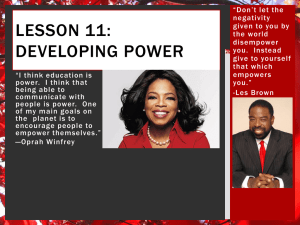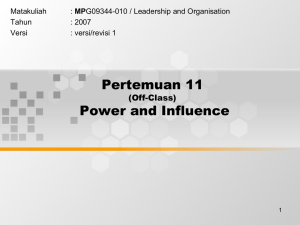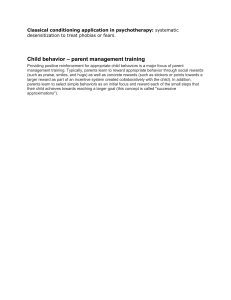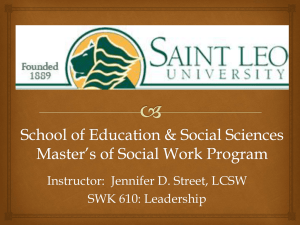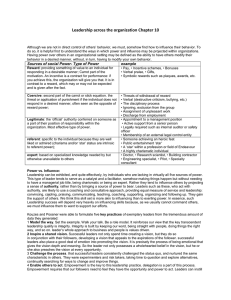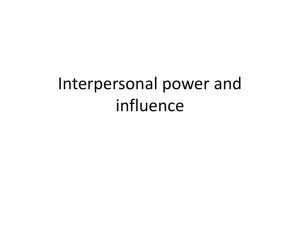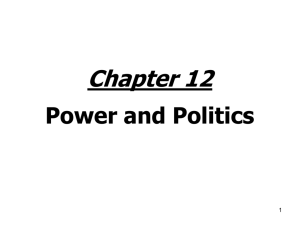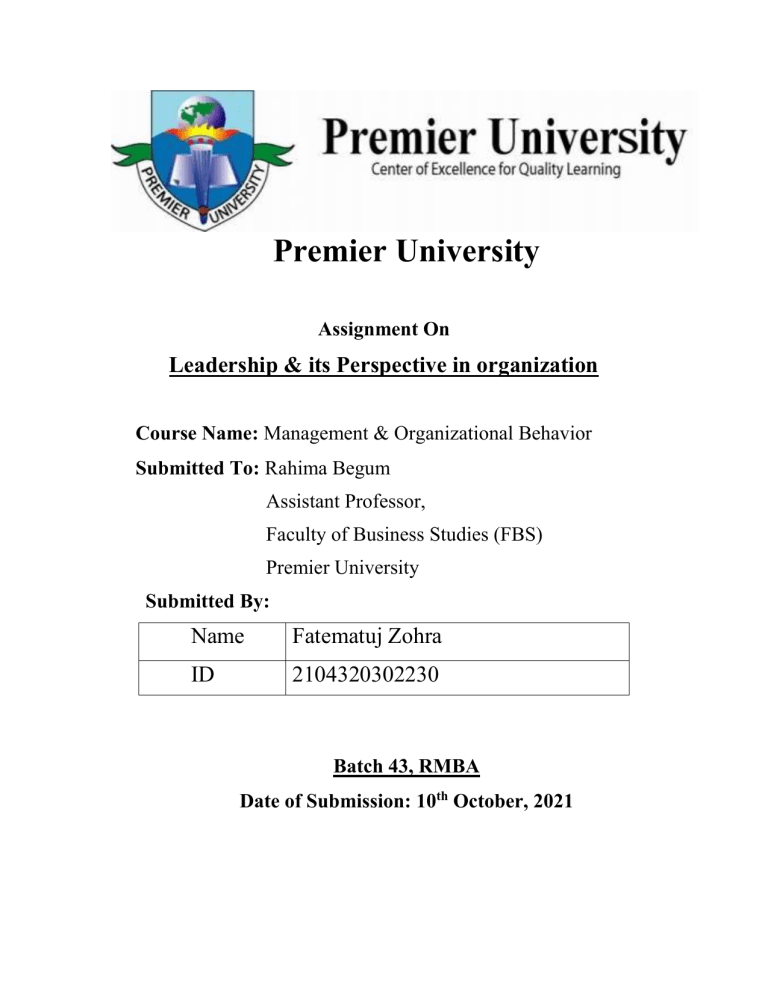
Premier University Assignment On Leadership & its Perspective in organization Course Name: Management & Organizational Behavior Submitted To: Rahima Begum Assistant Professor, Faculty of Business Studies (FBS) Premier University Submitted By: Name Fatematuj Zohra ID 2104320302230 Batch 43, RMBA Date of Submission: 10th October, 2021 Leadership & its Perspective in organization Definition: Leadership refers an incessant process of influencing, directing and motivating behavior to perform in organization. It can be considered as a mutual relation between a leader and his team mates. For achieving desired goals, the leader tries to influence, direct and motivate the behavior of individuals or a group of individuals around him. It refers process where interaction occurs among leaders, members and sometimes outside constituencies. Neither all leaders are manager, nor are all managers leaders too. Every organization needs strong leadership and management. Nowadays leadership is an important issue in the field of management practice just because a compatible leader can make an organization success. Good leaders are made not born. So, leadership development is an important issue in management. It develops those qualities which helps a leader to look into the future and achieve organizational goal. Leaders: Not every person is suitable for an organizational leader. Some characteristics must be develop in his character. People who can influence the other behaviors without having to rely on force. Again, a leader must be accepted by others as leaders. Leadership and management: Leadership and management are related in many ways. But they are not same. One person can a manager, a leader or both. Organization need both manager and leader. Management does plan and budgeting. Management takes necessary steps & timeline for achieving goal but leadership establishing direction. It develops vision of the future and strategies needed to achieve the vision. Management also does the organizing, staffing, controlling problem solving to achieve the goal. Leadership does align people, motivating and inspiring. Leadership & Power: To know about leadership we have to know about power. Power directs the ability to affect the behavior of individuals. In organization there are five kinds of power. They’re framed as below: Legitimate Power: Legitimate power is power you derived from your formal position or office held in the organization’s hierarchy of authority, it is the power defined by the organization to be accorded to people occupying a particular position. As an example, the president of a company has certain powers since the office he holds in the company. Legitimate power is based upon perception and reality. It is based on the reality that a person holds a particular position in an organization. All the managers have legitimate power over their subordinates. Some subordinates do not something not in their job description they strictly follow the letter of organizational rules and policies. The managers of such employees are exercising authority but not leaders. Legitimate Reward Coercive Referent Expert power Reward power: Managers who affects their employees’ behaviors by giving them rewards use their reward power. Reward power is simply the power of a manager to provide some form of reward to an employee as a means to influence the employee to act or react. Reward that a manager can control and supervise include salary increases, bonuses, promotion and performance recommendation, praise and interesting job assignments. Rewards can be tangible or intangible. The major difference between a tangible reward and an intangible reward is that tangible rewards are substantial things, while intangible rewards are not. Example of tangible rewards are salary increase, bonuses etc. Example of intangible rewards are praise recognition etc. Coercive power: Coercive power is the power of a manager to force an employee with penalty if the employee does not comply with the rules and regulation of the company. In the past physical coercion in organization was relatively common. Threats of write ups, demotions, pay cuts, layoffs and terminations if employees don’t follow orders-are the major example of coercive power. Though coercive power can be effective in the short term to solve the immediate problem, but it can blast as serious problems for organizational effectiveness in the long run. Coercion tends to lower job satisfaction Referent Power: Referent power is compared with legitimate, reward and coercive power, which are relatively concrete and grounded in objective facts of organizational life, referent power is abstract. Referent power is defined by trust. By its very nature, it is not something the leader can command of others but rather something the leader earns on a case-by-case basis over time. Leaders are those personnel’s who achieve and maintain the trust of employees as well as others consistently drive productivity, enhance engagement and retain key talent. Leadership style at Pacific Jeans LTD Pacific Jeans LTD based in CEPZ, a world class casual wear manufacturing company from 1983 in RMG sector of Bangladesh. Currently, Pacific Jeans Ltd is one of the premium jeans manufacturers exporting to over 50 countries. The company already owns 8 sister concerns including their new Five Star Hotel Project. Pacific Jeans Ltd follows participative leadership style. There is a supportive work in environment. The employees of this company can provide their opinions that are evaluated by the top management with importance. The organization provides a maximum level of job freedom towards the employees corresponding to their work, so the employees can make decisions of their respective works. This leadership style is the key component of their success within a short time period and in a very competitive RMG sector in Bangladesh. Participation refers the mental, emotional and substantial involvement of people in company situations that encourages them to contribute to organizational goals and share responsibilities for them. Participative managers consult with their employees, bringing them in on problem and decisions so that they work together as a team. The managers cannot be dictators, but neither can the managers who abandon their management responsibilities and regulations. Participative managers still remain ultimate responsibility for the operation of their units, but they have learned to share operating responsibility with those who perform the work. In the circumstances, employees feel a sense of involvement in organizational goals by sharing their ideas and unique thoughts. Conclusion: In the long run, leadership is the process of influencing and supporting others to work enthusiastically toward achieving objectives. The participative leadership style of Pacific Jeans LTD. has helped the organization to achieve their ultimate goal. In an organization, where the leader tend to be open minder, willing to change with industrial revolution and learn lesson from the mistakes of predecessors will have attain and avail leadership in the management that leads to achieve organizational goal. The End
